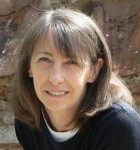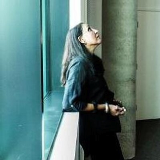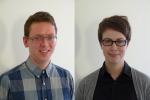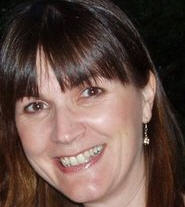Early in June, members of the Newsam Library & Archives met to discuss ways to better promote our services and collections to our users via Twitter. @IOELibrary joined Twitter in June 2011 and has gathered about 625 followers. We wanted to get a team, representing all the different sections in the Library (Collection Development, User Services, Technical Services and Administration), that would take responsibility for tweeting for @IOELibrary. We had no special requirements for the staff. They didn’t need to be experienced users of Twitter. We simply wanted interested people who had interesting things to say.
...continue reading
The life of an OU intern – Engaging Research Week 1
Blogging is something slightly alien to me, especially in an academic sense. As an Open University intern it is part of my role to blog about what I’m doing and quite simply, it seems that the activities I'm currently a part of are just too interesting to keep from you all! ...continue reading
Imagining scientists – having fun, out on the street, tracking criminals and fighting zombies!
Can you imagine a scientist? Alternatively, can you imagine yourself working as a scientist? These are questions that Liz Whitelegg, Richard Holliman and myself, all members of the Invisible Witnesses team, have been asking school students.
...continue reading
Prison-based higher level distance learning and its role in life after prison
Higher level distance learning in prison gives prisoners a positive student identity, resilience and high hopes for a better, crime-free future. These qualities help them to tackle the immense challenges facing ex-prisoners. Maintaining their student identity and belonging to a learning community after release, also enables them to integrate into society more easily.
Developing a publics-centred approach to conducting and evaluating engaged research
A case study of the Participation Now project
If you are reading this blog, you’ll no doubt be aware that public engagement is high on the agenda within higher education and many other domains. You’ll also probably be aware that researchers face increasing pressures – from their institutions, funders and colleagues – to engage publics and produce evidence of the ‘impact’ and ‘relevance’ of their research. However, little systematic attention has so far been paid to what precisely is meant by the ‘public’ in public engagement.
What happens if we put the ‘public’ at the centre of our efforts to conceptualise, conduct and evaluate publicly engaged research? This question formed the starting point for a presentation that we gave at the Open University on 9th June as part of the Engaging Research seminar series.
Evaluating ways of capturing engagement processes
Project Team: Gill Clough, Eliz Hartnett, Andrew Brasher, Canan Blake, Anne Adams
We are really excited to have been selected for seed funding from the Evidencing Engaged Research call. This project builds on and extends the work we are doing on the JuxtaLearn Project which aims to engage students with science and technology through creative video performance (see our earlier post).
Engaging research and communication: OU practices and tools

Last week (12th May), Ann Grand and I gave a seminar at the OU on Digital Engagement. I started by giving a brief introduction to public engagement, referring to the NCCPE's EDGE tool for self-assessment, and a description of the purpose of the OU's Public Engagement with Research Catalyst project.
Researchers and social media: a game of snakes and ladders

Ah, the irony. A workshop on how researchers use social media that was conducted entirely through the medium of a board game and cut-out paper snakes.
...continue reading
Managing ecosystems: research impact through engagement
An award-winning, externally-facing partnership with research at the core
I don't think of myself as an academic. Before I took on my current role as an Outreach Coordinator within the award-winning Floodplain Meadows research team at the Open University I'd worked for 12 years for the Environment Agency, delivering policy, legislation and proactive conservation projects ‘on the ground’ in Dorset, Wiltshire and a little bit of Hampshire. I'd worked with a wide range of conservation and community partners, occasionally getting cross with flood defence engineers. In short, I came to this job for a change!
Technology and data driven collaboration – archaeological practice in the 21st Century
Seminar given on March 10th, 2014 by Anthony Beck, OrcID: Honorary fellow - University of Leeds, School of Computing
The text is CC0 (+BY). The illustrations are CC-BY.
Improving impact through Open Science

The Detection of Archaeological residues using Remote Sensing Techniques (DART) project has the overall aim of developing analytical methods for identifying heritage features and quantifying gradual changes and dynamics in sensor responses. To examine the complex problem of heritage detection DART has attracted a consortium consisting of 25 key heritage and industry organisations and academic consultants and researchers from the areas of computer vision, geophysics, remote sensing, knowledge engineering and soil science.
...continue reading







